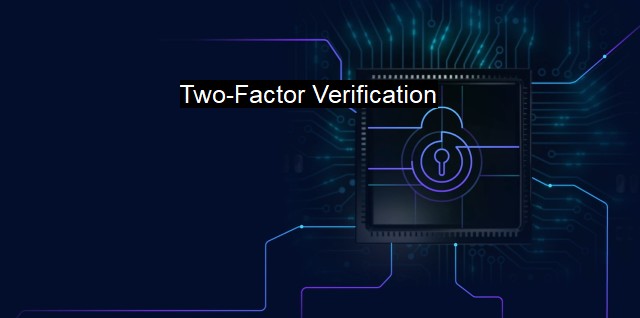What is Two-Factor Verification?
Enhancing Cybersecurity: The Importance and Benefits of Two-Factor Verification for Sensitive Information and Systems
Two-Factor Verification is a crucial component in the vast landscape of cybersecurity and antivirus utility. Fundamentally, it is a security mechanism that requires users to provide two distinct forms of identification before they could access certain features or functionality of a particular platform. This technique is often utilized to strengthen the security measures around digital data and offer an additional layer of protection against potential security breaches.When it comes to the digital world, assured data protection and guaranteed user identity are of utmost priority. Two-Factor Verification, often shortened to "2FA", provides just that by ensuring that users are who they claim to be. It is pitted against the traditional and somewhat outdated method of maintaining a single-layered password protection, which involves only one layer of identification. Instead, Two-Factor Verification insists on the presence of two distinct variables that are required for authentication.
The authentication variables in Two-Factor Verification generally involve evidence from two out of three categories known as "Something You Know," "Something You Have," and "Something You Are." The first category refers to passwords, PINs, or answers to security questions, essentially information the user has memorized. The second encompasses possession proofs, such as mobile devices, smart cards, or token devices that generate time-sensitive codes. This method can help confirm a user's identity due to the presumed ownership of the device or card. Lastly, "Something You Are" includes biometric forms of identification such as fingerprints, facial recognition, or even voice patterns.
When one considers Two-Factor Verification in the context of cybersecurity and antivirus utility, a number of compelling advantages emerge. Hackers embarking on unauthorized entry into systems usually base their attacks on stealing or guessing the sole-point of verification, namely, the password. A successful guess or theft of the password allows a quick triumph. if Two-Factor Verification is employed, security breach becomes significantly harder, if not nearly impossible. Even if a malicious entity acquires the password, they will still need the second form of identification, which would usually be uniquely personal or hardware dependent.
Virus attacks and hacking can also potentially corrupt data and render the sole-factor identification unreadable or damaged. In such a case, access to the system even by the correct users becomes impossible. by virtue of its twin-identification protocol, the Two-Factor Verification effectively nullifies this hurdle. If one method fails, there is another one backing it up. Hence, data integrity and system access are preserved.
It's essential to understand that while Two-Factor Verification considerably enhances security, it is not entirely infallible. Users also have to shoulder some level of responsibility in ensuring that their devices or cards belonging to 'Something You Have' stay protected, or that basic information in 'Something You Know' isn't easily discoverable.
Bringing it all together, Two-Factor Verification offers a more layered and well-rounded defense strategy against cyber threats, safeguarding sensitive data more efficiently. It can function as a formidable antivirus utility as it preempts breaking through the security wall which keeps the viruses and malware at bay. End-user security, data protection, and system integrity are at the heart of 2FA technology, making it an indispensable and invaluable tool in the ongoing war against cyber threats in today's increasingly digital era.

Two-Factor Verification FAQs
What is two-factor verification?
Two-factor verification, also known as two-factor authentication (2FA), is a cybersecurity measure that requires users to provide two forms of identification before accessing a system or application. This typically involves something the user knows, such as a password or PIN, and something the user has, such as a security token or biometric information.Why is two-factor verification important for antivirus protection?
Two-factor verification adds an extra layer of security to antivirus protection by preventing unauthorized access to user accounts. It can prevent hackers and cybercriminals from accessing sensitive information or installing malware on a device, even if they manage to steal a user's password.What types of two-factor verification are available for antivirus software?
There are several types of two-factor verification that can be used with antivirus software, including SMS-based authentication, mobile apps that generate one-time codes, hardware tokens, and biometric authentication. Different types of two-factor verification may be more appropriate for different users or applications, depending on factors such as security requirements, ease of use, and cost.Should I use two-factor verification for all of my antivirus software?
Using two-factor verification for all of your antivirus software is generally a good idea, as it can significantly improve the security of your devices and data. However, some antivirus software may not support two-factor verification, or may only offer limited options for authentication. Users should weigh the benefits and risks of using two-factor verification, and choose an appropriate level of security based on their individual needs and circumstances.| | A | | | B | | | C | | | D | | | E | | | F | | | G | | | H | | | I | | | J | | | K | | | L | | | M | |
| | N | | | O | | | P | | | Q | | | R | | | S | | | T | | | U | | | V | | | W | | | X | | | Y | | | Z | |
| | 1 | | | 2 | | | 3 | | | 4 | | | 7 | | | 8 | | |||||||